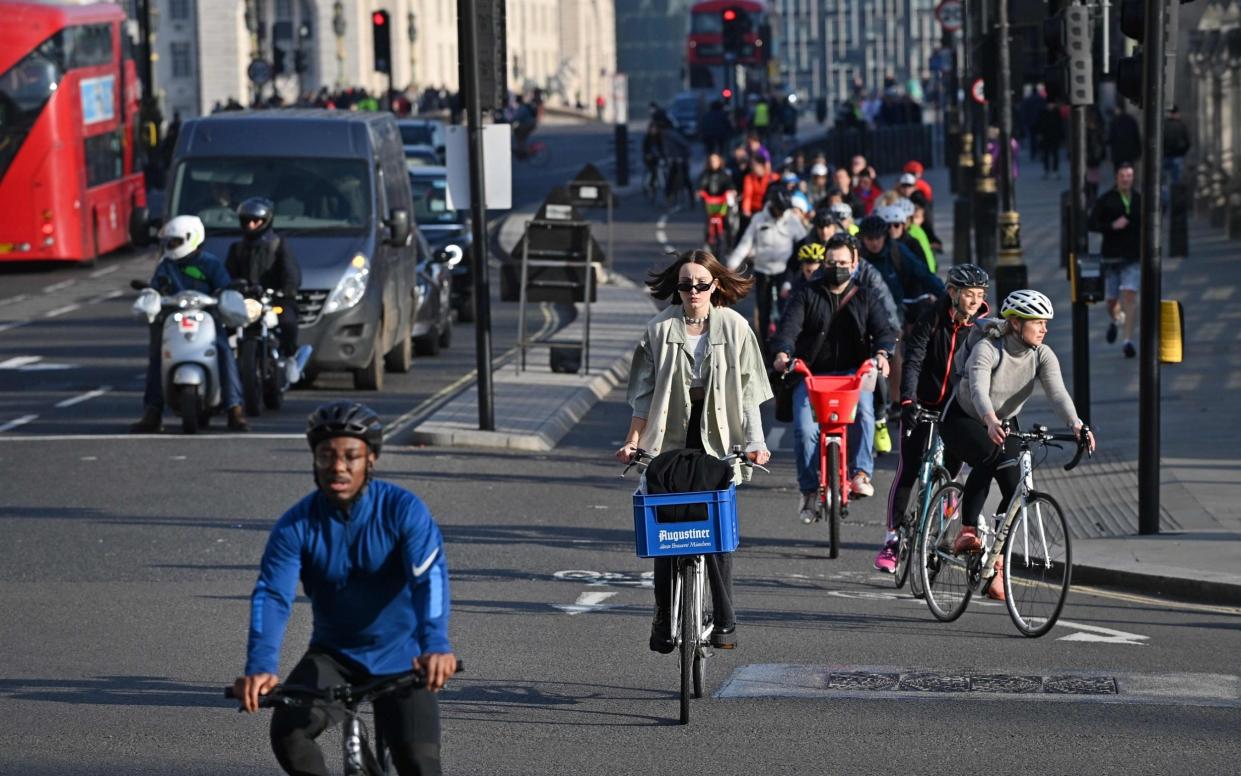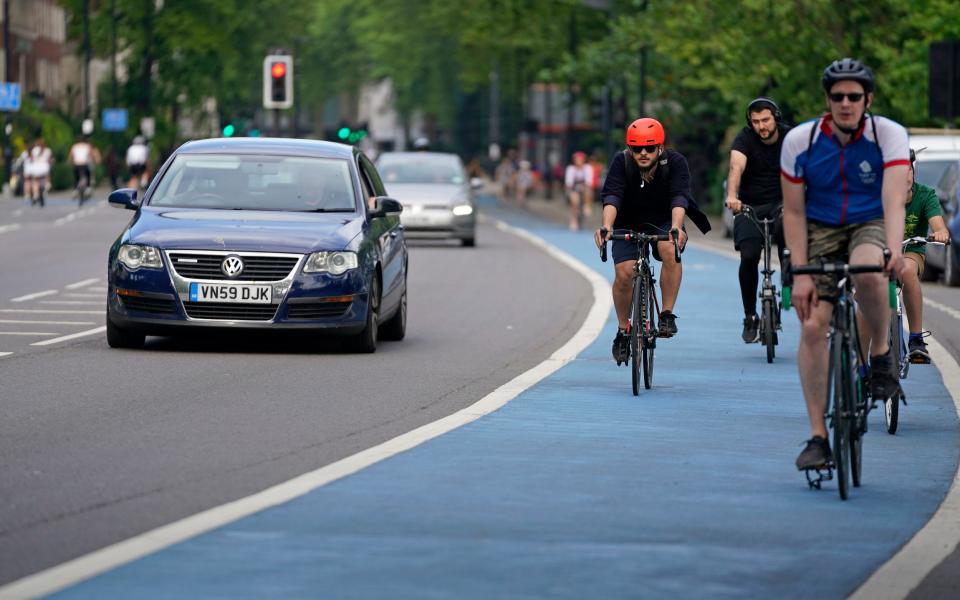Cycle lanes blamed for London’s status as world’s most congested city

London has been named the world’s most congested city as motorists are set to lose 148 hours to traffic this year, with cycle lanes blamed.
Traffic information supplier Inrix said traffic levels were just one per cent down on the period before the pandemic, a much smaller decline than many other major cities across the globe.
Peter Lees, of Inrix, said the installation of cycle lanes had a “negative impact on congestion”, because there was less space for cars to use.
“There’s a longer-term plan, of course, for not only London, but all places, to look at the environmental impact of motor traffic,” he said.
“So there will be a move to making other ways to travel more readily available. Inevitably, that will cause some impact on motor transport.
“It’s about available road space, as well as effective use of that road space, and good information for users so they can plan about when they travel.”
Congestion ‘shows quick rebound from pandemic’
Mr Lees added that the trend was mostly driven by the UK’s strong post-pandemic recovery, adding: “If you’re sat in that congestion, then it’s probably not a good thing.
“But actually, for the country, it’s not really reflecting a bad thing, because what this is showing is that the UK, and particularly London, has rebounded most quickly from the effects of the pandemic.”
Duncan Dollimore, head of campaigns at the charity Cycling UK, said: “It’s incredibly simplistic for Inrix to suggest that the use of road is all about supply and demand, without considering how efficiently that road space is used.

“On Blackfriars Bridge, cycle lanes take up 20 per cent of the road space but move 70 per cent of the people across it at peak times, with cycle lanes across London moving more people more efficiently in less space.
“Inrix are focussed on the tarmac available for cars, when the question should be how we use and allocate that space better, changing travel behaviours and reducing congestion in the process.”
Last year the traffic information supplier ranked London as only the 16th most congested city. New cycle lanes were installed in the capital in 2020 following the coronavirus outbreak, in a bid to encourage active travel.
Several councils reversed the schemes following vocal opposition by motorists who claimed they caused delays, but some of the lanes remain in place.
Paris was in second place in the global ranking for most congestion, followed by Brussels, Moscow and New York.
Across the UK as a whole, drivers will waste an average of 73 hours in traffic this year, up 36 hours from 2020, but down 42 hours compared with pre-Covid 2019.
Inrix estimated that the economic hit from drivers being stuck in traffic this year will cost an average of £595 per person, and the UK £8 billion.
Trips to larger city centres still lag behind normal levels, but smaller cities are experiencing “minimal decreases in travel” which is maintaining congestion levels, according to the company.
This has led to Cambridge becoming the UK’s second most congested city, followed by Bristol, Exeter and Cheltenham.

 Yahoo News
Yahoo News 
